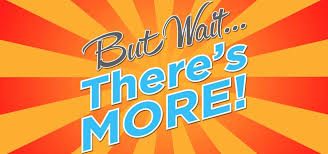What are the best ways to play
THE QUESTIONS GAME?

We have TWO games here.
TWO?!?! BUT I ONLY PAID FOR ONE!!!
THIS IS TWICE AS MUCH AS WHAT I”D HOPED FOR!!
I hope it’s not too confusing that I am presenting them simultaneously. THE QUESTIONS GAME is coloured RED. THE NO QUESTIONS GAME is coloured in GREEN.
Some teachers say, YOU SHOULDN’T ASK QUESTIONS. They argue that questions offer no information and unfairly puts pressure on your partner to carry the scene. These teachers are being a bit rigid and aren’t addressing the underlying issue.
When played effectively these games help performers move scenes forward and create useful questions versus ones that fearfully pass control to someone else.
Listen to the questions asked on stage. Questions like “WHAT ARE WE DOING?” and “WHY ARE WE HERE?” are probably anxious performer’s feelings coming through when they, themselves, are lost in the scene. Questions like, “Did you enjoy last night’s love making?” is a question that defines a lot more.
I remember experimenting with the QUESTIONS-ONLY game and turning it into a STATEMENT-ONLY game. We were all surprised at how difficult it was.
None of us imagined how our brains were wired to fall back on questions when we didn’t know what to say. The scenes immediately moved forward and performers, known to be hesitant and fearful, looked brave and direct.
The games are obviously related. Play them for fun or play them to train your skills. They have more worth than what we originally imagine.
GAME(s): THE QUESTIONS GAME and NO QUESTIONS GAME (The STATEMENT GAME)
ORIGIN:
1) The Questions Game – Unknown origin: Some people argue this was Keith Johnstone’s creation. He published his description of it 1999 in IMPRO FOR STORYTELLERS. but it can be seen in the play ROSENCRANTZ AND GUILDENSTERN ARE DEAD by TOM STOPPARD in 1966. (and probably played much earlier… don’t you think?)
2) No Questions (The Statement Game) – Shawn Kinley- although it is well argued that many teachers created this version in the process of teaching the Questions game… which is probably true!
BENEFITS: Many.
1) Questions Game – Played effectively it encourages narrative and the removal of “wimping” qualities (fear to define and control). Risk taking. Awareness.
2) No Questions Game – Played effectively, encourages narrative and the removal of “wimping” qualities (fear of control). Risk taking. Awareness. (DEJA VU!). It also effectively demonstrates how often we ask questions without relevance and how many questions delay us from moving forward in the scene.
# PEOPLE: Groups – 2 or more (Better with 2. I’ve seen a solo question scene done by an improviser talking on the phone. I liked it that once. Once was enough.)
GOAL:
1) Questions – Only ask questions to move your scene forward.
2) No Questions – Do your scene without any questions.
PROCEDURE:
1) QUESTIONS –
In the practice version, do a scene where the dialogue may only contain questions.
THEN… replace the performer if they make a statement.
THEN… replace the performer if they hesitate or make statements.
That’s usually enough for improvisers on stage but…
Here are a list of things to add to the game as you play it –
(source WIKIPEDIA)
- hesitation: player takes too long to reply or grunts or makes a false start
- repetition: player asks questions identical to or synonymous with one already asked this game (not match)
- rhetoric: player asks a rhetorical question
- non sequitur: player responds with an unrelated question
- synonym: player asks a question almost the same as a previous question
2) NO QUESTIONS GAME
The early version has performers do their scene where they may NOT use questions.
THEN… replace the performer if they make a statement.
THEN… replace the performer if they hesitate or correct themselves
EXAMPLE:
1) QUESTIONS (played by two children)
TONY: Can you pass me the stuffed Dalmation?
JONAH: Do you want his leash as well?
TONY: Sure! (TONY is replaced by TINA because he made a statement.)
TINA (fixing the problem): Can you give me the strong chain leash?
JONAH: Are you scared he will attack Mommy and Daddy?
TINA: (takes the leash) Did you see how he looked at Daddy with hunger in his eyes when he came into the room?
JONAH: Didn’t you see me seeing him looking at Daddy? (Jonah is replaced by Shawn for a weird rhetorical question…)
etc etc…
1) NO QUESTIONS (same scene with the children as above)
JONAH: Let’s take the dogs to the park.
TONY: Pass me the stuffed Dalmation.
JONAH: Take his leash.
TONY: Which one? (TONY is replaced by TINA because he asked a question.)
TINA (fixing the problem): Try this new Titanium leash.
JONAH: Thanks
TINA: I think Fluffy has a taste for Daddy.
JONAH: (hesitates – looking for something to say )- :Why di– Daddy is still scared after the last attack! (Jonah is replaced by Shawn for hesitating AND starting with a question and trying to correct it…)
etc etc…
TEACHING TIPS: Don’t get too caught up with all of the specific elimination possibilities in the Question’s game. Statements and Hesitations are the important things to look for.
Some performers are blind to their mistakes. It can be useful to encourage the audience to make a verbal response to the mistakes. And they love to call out our mistakes.
Some performers will simply leave the stage before they’ve made a mistake. Encourage them to TAKE A RISK. It is better to possibly fail because you tried SOMETHING rather than to give up and fail for certain.
Because of the danger that some performers continue to play the verbal game, eventually suggest that performers move the scene forward physically. When Jonah says, “Can you pass me the Dog’s leash?” JUST PASS THE LEASH and move forward. We know the scene isn’t about the leash. This is a big problem when performers think too highly about the game and ignore the story that they are in the middle of.
VARIATION: The NO QUESTIONS game is the variation of the QUESTIONS game. Switching between the two games can be fun. Someone outside the game yells “SWITCH” and the performers go into the other mode. (A good practice for a flexible brain).
Playing the game for points. For whatever reason, you may choose to have performers score points instead of being replaced by other performers. We did this in a corporate event with the audience divided and supporting “their” player on stage. They would call out the mistakes of the opposing player.
IMPORTANT: Performers will increasingly protect themselves from failure. They will go slower and talk in mechanical and stilted ways to “ensure success”. Hold them accountable. If you don’t replace people for these behaviours, they will train themselves to be safe on stage and destroy the value of the exercises. Winning the game is less important than playing bravely.
Some people teach this as a verbal game and won’t allow people to DO ANYTHING without verbally responding. I discourage that style. If someone in the question game asks me “Can you pass me the diapers for Jonah?” I might do what a normal human would do and pass the diapers. A normal question in the established relationship could follow without addressing the diaper question, “Do you think we will ever have a normal relationship ever again?” — Scenes are not about diapers.




0 Comments